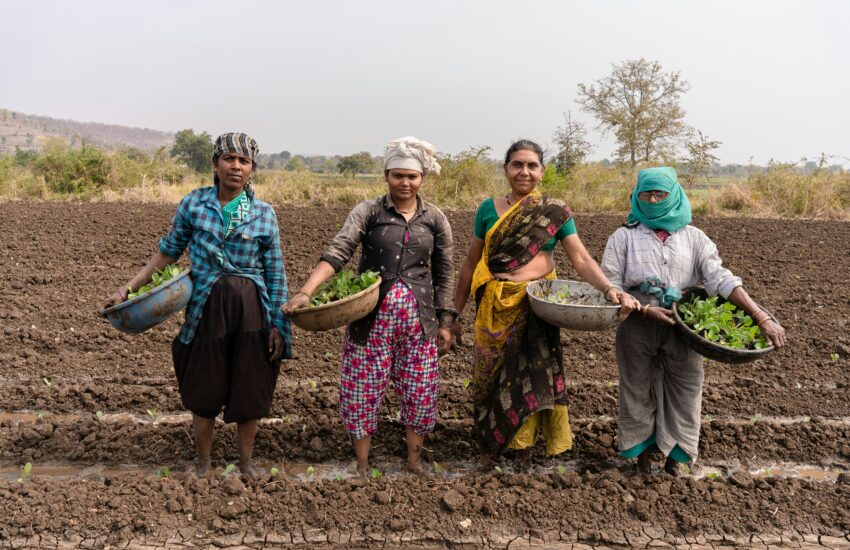Redefining Prosperity: Women and Youth at the Frontlines of the Green Economy
- Home
- Redefining Prosperity: Women and Youth at the Frontlines of the Green Economy

Redefining Prosperity: Women and Youth at the
Across the world, conversations about the green economy often focus on technology, finance, and policy. Yet the true drivers of a just transition are not only innovations or markets but people. In particular, women and youth hold the key to reshaping how we think about prosperity, resilience, and climate justice.
In many rural communities, women are the backbone of households and food systems, while youth represent the energy and creativity needed for transformation. Unfortunately, these groups are too often excluded from decision-making, trapped in cycles of labor without recognition, and left without access to the opportunities unlocked by climate finance. The GREAT initiative is committed to changing this reality by putting women and youth at the center of the regenerative economy.
Why Women and Youth Matter in the Just Transition
Women and youth are disproportionately affected by the impacts of ecological degradation and fossil fuel dependency. Women spend hours each week collecting firewood, carrying water, and managing fuel-intensive household tasks that contribute to deforestation and health problems. Young people, meanwhile, often face limited job opportunities in rural areas, leading many to migrate to overcrowded cities in search of work.
By placing them at the heart of green economy solutions, we can flip this narrative. Instead of being marginalized, they become the architects of regeneration. Women and youth bring unique perspectives, community knowledge, and the willingness to innovate qualities essential for the success of regenerative farming, renewable energy adoption, and community-led governance.
From Labor to Leadership
One of the most powerful changes the GREAT initiative drives is shifting women and youth from invisible laborers to recognized leaders.
- For Women: Renewable energy systems like biodigesters reduce the time and health burdens of cooking with firewood. This gives women the freedom to pursue education, enterprises, and leadership opportunities. Making them central to governance ensures carbon revenue and community benefits are distributed fairly.
- For Youth: Participation in regenerative farming, agroforestry, and carbon credit generation creates meaningful employment at home. Instead of being pushed away from their villages, youth help build viable, future-oriented economies grounded in ecological stewardship.
This shift goes beyond economics and affirms dignity, agency, and justice for the very people who have historically been overlooked.
Redefining Prosperity
Traditional measurements of prosperity often revolve around income or GDP growth. However, true prosperity is about:
- Time regained when women no longer carried the burden of fuel collection.
- Health is restored when families breathe clean air instead of smoke-filled kitchens.
- Forests are protected when communities have renewable energy alternatives.
- Youth empowered with opportunities to lead the regeneration of ecosystems.
- Community agency strengthened through people-led systems of governance.
By framing prosperity in this holistic way, the green economy becomes not just about climate metrics but about thriving, resilient communities.
Carbon Markets as Enablers
A key enabler of this shift is the integration of communities into global carbon markets. For every ton of emissions reduced or avoided whether through biogas systems, reforestation, or soil restoration, carbon credits are generated. These credits represent not only climate action but financial opportunity.
Through the GREAT initiative, rural households receive a direct share of this revenue. This revenue is not distributed randomly but managed through inclusive governance, where women and youth play key decision-making roles. In this way, carbon markets become engines of empowerment, not systems of exclusion. By design, they recognize and reward the climate stewardship of those too long ignored.
Stories of Change
Already, the GREAT initiative has supported women who have transitioned from firewood-dependent households to clean biogas, freeing them to start enterprises or lead community groups. Young people have been trained in maintaining biodigesters, managing agroforestry projects, and engaging in local governance. These are not side effects, they are central to the transformation. Each story reflects a shift away from survival toward regeneration and opportunity.
Conclusion
The green economy is often described in numbers: emissions cut, dollars raised, or credits sold. Yet the true measure of its success lies in people, especially those most often left behind. By centering women and youth, the GREAT initiative is showing that prosperity is not simply about income but about dignity, agency, and resilience.
As communities at the bottom of the pyramid connect to regenerative farming, renewable energy, and climate finance, they are not just beneficiaries but are leaders shaping a sustainable and just transition. The frontline of the green economy is not a boardroom or a capital city, it is a village where women and youth redefine what it means to prosper while healing the Earth.



